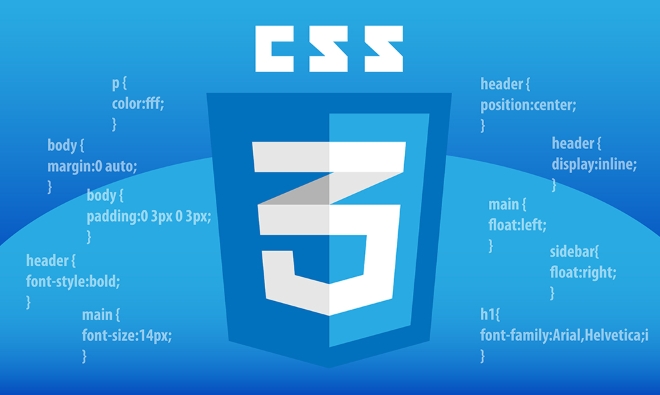CSS transitions and transforms enhance user experience with smooth animations. 1. The transition requires specifying attributes and duration, which are often used for color or size changes; 2. The transformation includes movement, rotation, scaling, etc., which does not affect the document flow; 3. The combination of the two can create button hovering, menu switching and other effects; 4. The number of animations should be controlled during use to avoid performance problems; 5. It is recommended to use hardware-accelerated transform instead of directly modifying the position or size.

Transitions and transforms are two of the most commonly used CSS features for adding subtle animations and visual flair to web elements. They're not just flashy effects—they can improve user experience by making interactions feel smoother and more intuitive. Let's break down how they work and how you can use them effectively.

How CSS Transitions Work
A transition lets you animate a change in a CSS property over time, rather than having it happen instantly. Think of things like changing a button's background color when hovered or adjusting an element's size on click.

To create a basic transition, you need at least two things:
- The property you want to animate
- The duration of the animation
Here's a simple example:

.button {
background-color: blue;
transition: background-color 0.3s ease;
}
.button:hover {
background-color: darkblue;
}Some key points:
- You can apply transitions to multiple properties by separating them with commas
- Use
ease,linear, or custom cubic-bezier timing functions to control speed - Don't add too many transitions at once—performance matters
If you don't specify which property to transition, and use all instead, it might catch more changes than intended and cause unnecessary rendering work.
Understanding CSS Transforms
Transforms let you move, rotate, scale, or skew elements without affecting the document flow. They're often used together with transitions to create smooth visual changes.
There are several transform functions:
-
translate(x, y)– moves an element -
scale(x, y)– resizes it -
rotate(angle)– spins it around -
skew(x-angle, y-angle)– tilts it
Here's a hover effect that scales and rotates a card:
.card {
transition: transform 0.4s ease;
}
.card:hover {
transform: scale(1.1) rotate(5deg);
}Important notes:
- Transforms are hardware-accelerated in most browsers, so they tend to be smooth
- You can chain multiple transform functions together
- Order matters if you're combining translations and rotations
Also, using transform is usually better than animating position or size directly because it avoids layout thrashing (which can cause jank).
Combining Transitions and Transforms for Smooth Effects
When you pair transitions with transforms, you get powerful tools for interactive design. For example, a menu icon that smoothly morphs into a close button, or an image that zooms in slightly when hovered.
One common trick is creating a "lift off" effect when hovering over a link or button:
.link {
display: inline-block;
transition: transform 0.2s ease;
}
.link:hover {
transform: translateY(-4px);
}You can also layer in other styles like shadows or color shifts for extra poly. Just keep in mind:
- Keep durations short for UI feedback (like 0.2–0.4 seconds)
- Use easing functions that feel natural
- Avoid overdoing it—too many moving parts can distract users
Another good use case is for dropdown menus or toolstips that fade in with a slight scale-up effect. It feels more alive than a sudden appearance.
That's basically all you need to start playing with transitions and transforms. They're straightforward once you understand the basics, but there's plenty of room to get creative. Just remember: smooth doesn't always mean slow, and movement should serve a purpose.
The above is the detailed content of CSS tutorial on transitions and transforms. For more information, please follow other related articles on the PHP Chinese website!

Hot AI Tools

Undress AI Tool
Undress images for free

Undresser.AI Undress
AI-powered app for creating realistic nude photos

AI Clothes Remover
Online AI tool for removing clothes from photos.

Clothoff.io
AI clothes remover

Video Face Swap
Swap faces in any video effortlessly with our completely free AI face swap tool!

Hot Article

Hot Tools

Notepad++7.3.1
Easy-to-use and free code editor

SublimeText3 Chinese version
Chinese version, very easy to use

Zend Studio 13.0.1
Powerful PHP integrated development environment

Dreamweaver CS6
Visual web development tools

SublimeText3 Mac version
God-level code editing software (SublimeText3)

Hot Topics
 How can I include CSS only on some pages?
Jun 11, 2025 am 12:01 AM
How can I include CSS only on some pages?
Jun 11, 2025 am 12:01 AM
There are three ways to selectively include CSS on a specific page: 1. Inline CSS, suitable for pages that are not frequently accessed or require unique styles; 2. Load external CSS files using JavaScript conditions, suitable for situations where flexibility is required; 3. Containment on the server side, suitable for scenarios using server-side languages. This approach can optimize website performance and maintainability, but requires balance of modularity and performance.
 Flexbox vs Grid: Understanding the Key Differences in CSS Layout
Jun 10, 2025 am 12:03 AM
Flexbox vs Grid: Understanding the Key Differences in CSS Layout
Jun 10, 2025 am 12:03 AM
Flexboxisidealforone-dimensionallayouts,whileGridsuitstwo-dimensional,complexlayouts.UseFlexboxforaligningitemsinasingleaxisandGridforprecisecontroloverrowsandcolumnsinintricatedesigns.
 Creating an Auto-Closing Notification With an HTML Popover
Jun 10, 2025 am 09:45 AM
Creating an Auto-Closing Notification With an HTML Popover
Jun 10, 2025 am 09:45 AM
The HTML popover attribute transforms elements into top-layer elements that can be opened and closed with a button or JavaScript. Popovers can be dismissed a number of ways, but there is no option to auto-close them. Preethi has a technique you can u
 What is 'render-blocking CSS'?
Jun 24, 2025 am 12:42 AM
What is 'render-blocking CSS'?
Jun 24, 2025 am 12:42 AM
CSS blocks page rendering because browsers view inline and external CSS as key resources by default, especially with imported stylesheets, header large amounts of inline CSS, and unoptimized media query styles. 1. Extract critical CSS and embed it into HTML; 2. Delay loading non-critical CSS through JavaScript; 3. Use media attributes to optimize loading such as print styles; 4. Compress and merge CSS to reduce requests. It is recommended to use tools to extract key CSS, combine rel="preload" asynchronous loading, and use media delayed loading reasonably to avoid excessive splitting and complex script control.
 How to use Lotties in Figma
Jun 14, 2025 am 10:17 AM
How to use Lotties in Figma
Jun 14, 2025 am 10:17 AM
In the following tutorial, I will show you how to create Lottie animations in Figma. We'll use two colorful designs to exmplify how you can animate in Figma, and then I'll show you how to go from Figma to Lottie animations. All you need is a free Fig
 Breaking Boundaries: Building a Tangram Puzzle With (S)CSS
Jun 13, 2025 am 11:33 AM
Breaking Boundaries: Building a Tangram Puzzle With (S)CSS
Jun 13, 2025 am 11:33 AM
We put it to the test and it turns out Sass can replace JavaScript, at least when it comes to low-level logic and puzzle behavior. With nothing but maps, mixins, functions, and a whole lot of math, we managed to bring our Tangram puzzle to life, no J
 External vs. Internal CSS: What's the Best Approach?
Jun 20, 2025 am 12:45 AM
External vs. Internal CSS: What's the Best Approach?
Jun 20, 2025 am 12:45 AM
ThebestapproachforCSSdependsontheproject'sspecificneeds.Forlargerprojects,externalCSSisbetterduetomaintainabilityandreusability;forsmallerprojectsorsingle-pageapplications,internalCSSmightbemoresuitable.It'scrucialtobalanceprojectsize,performanceneed
 Does my CSS must be on lower case?
Jun 19, 2025 am 12:29 AM
Does my CSS must be on lower case?
Jun 19, 2025 am 12:29 AM
No,CSSdoesnothavetobeinlowercase.However,usinglowercaseisrecommendedfor:1)Consistencyandreadability,2)Avoidingerrorsinrelatedtechnologies,3)Potentialperformancebenefits,and4)Improvedcollaborationwithinteams.






